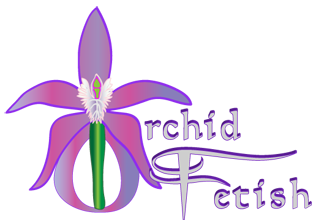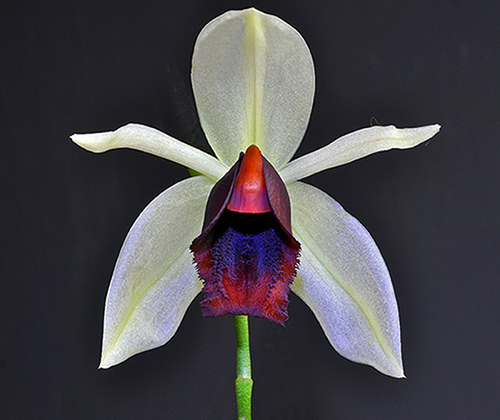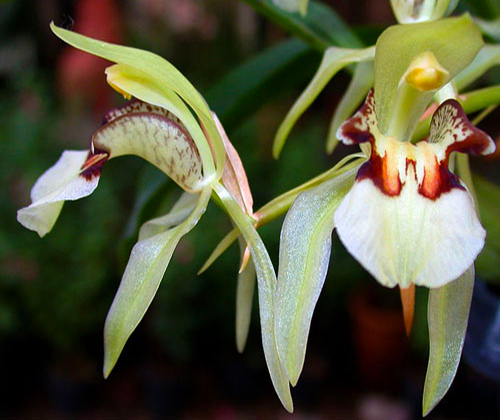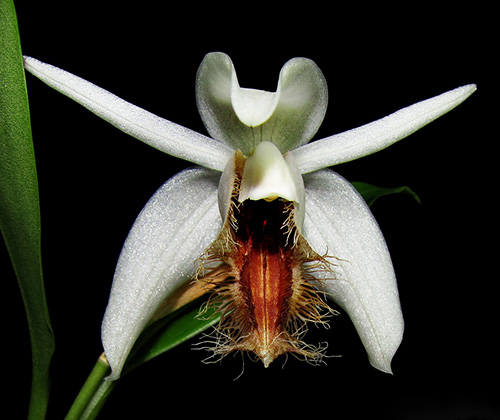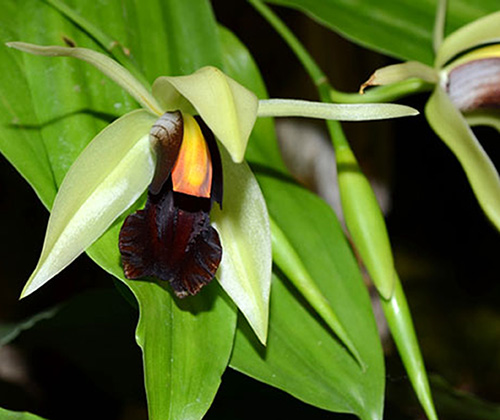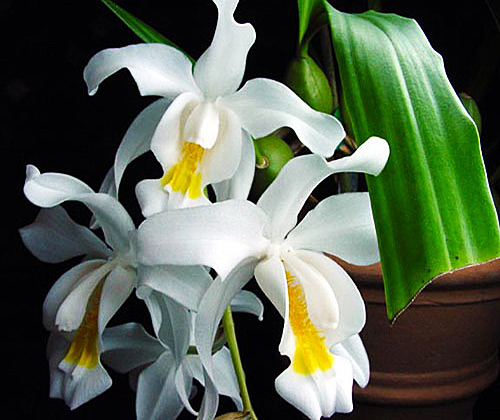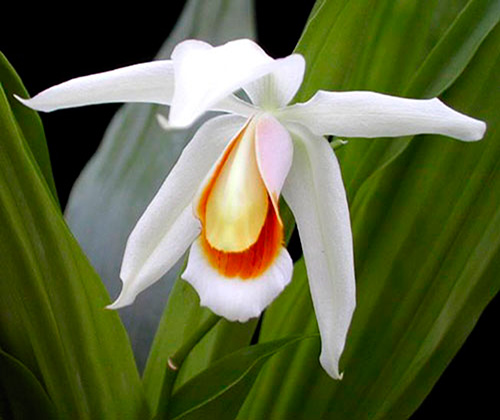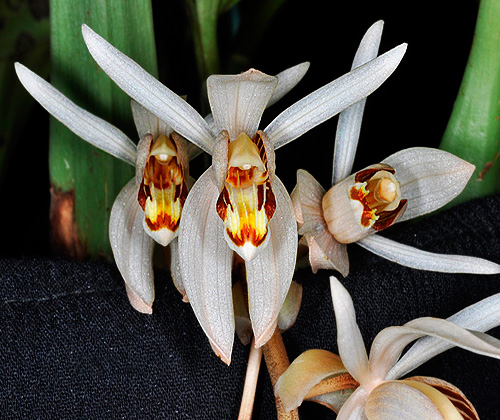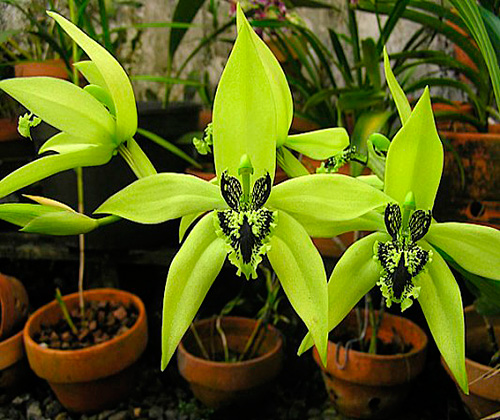Coelogyne Orchid
The Cool Orchid
The Coelogyne orchid genus gets overshadowed much more than it deserves. (People don't even spell it right: "Ceologyne" is a common error.) The plants have beautiful, fragrant flowers, can tolerate drought and neglect, and rapidly develop into massive, impressive specimens. Coelogyne are in the main cool growing species and hybrids but some will tolerate intermediate conditions without harm. A great many of them come from India and the Himalayas where they grow along side Pleione orchids in cool mountain regions that experience dry cool winters and heavy rainfall during monsoon months. This natural growth pattern is what gives us the clue about their cultivation in the home or greenhouse as some of them will not flower unless they receive a break from watering and are kept very cool in the winter. Coelogyne orchid plants have clusters of fragrant lacy snow-white flowers; salmon-pink solitary flowers; chainlike racemes of topaz and chocolate brown flowers; spikes of delicate white spice-scented flowers; emerald green flowers marked with blue-black.
Light
Coelogyne Orchids prefer shade to low medium light. Be sure that your orchid isn’t in direct contact with a breeze (hot or cold). Coelogyne appreciate high light levels to allow them to build up their food source in the pseudobulbs, this high light level will also produce well formed and compact plants. Although they like high light levels they should not be placed in direct strong sunlight near to the glass as the leaves may become scorched - use some form of white wash or mesh curtain to take the harshness out of the sunlight.
Temperature
During the day, Coelogynes prefer temperatures to be between 80 to 85 degrees F. and in the evening,it prefers cooler temps between 55 to 65 degrees F. but not below 50 or above 86 degrees F. They do best in cooler environments. Mature plants need a 15 to 20 F difference between night and day. Temperature requirements vary somewhat from species to species. High-elevation Coelogyne plants like cool temperatures, others will do better with intermediate temperatures. Most are cool-growing and during the wet season, temperatures can be as warm as 70-75°F (21-24C), but during the dry season it should be cooler, such as in the 50's or 60's Fahrenheit (10-20C) during the day, dropping 10-15°F (6-8C) at night.
Water
Do not allow these Coelogyne Orchids to fully dry out between watering (drying out below the surface between watering is perfect). During the winter, water minimally; you don't want leaf tips turning brown or severe shriveling of the pseudobulbs, but some shriveling is normal and they don't want to be too wet. If the humidity is appropriate, you might only have to water once every few weeks. But during the rainy season (summer-fall), they are very difficult to overwater; if you grow them mounted, water a few times per day; if growing them in pots or baskets, you still don't want them to dry out much if at all, so use a potting mix that retains a fair amount of moisture without getting soggy, such as coconut husks, fine fir bark, or tree fern fiber.
Humidity
Coelogyne Orchids grow best with a humidity tray underneath them and 60-80% humidity. If you are not able to use a tray, I find that it helps to mist your orchid to add a little humidity to the air (this works if your orchid is in a warmer area).
Fertilizer
The plants are moderate feeders and a general purpose plant food can be applied from April to September at 1/4 the pack recommendation Flush the pot out once a month with clean water to remove any unused plant food and salts which can build up in the compost and harm the roots. During late August and September you should water with a higher potash feed which will encourage the current years bulbs to harden and produce more and bigger flowers the following spring or during winter for winter flowering types. The plants will bloom during the winter dry season; they will start to grow as temperatures begin to warm up; increase watering and fertilizer when you see new roots developing. (The best time to repot your orchid will be just as it is resuming active growth.)
Potting
Repot Coelogyne Orchids every year or two with fine bark. The plants should never be over potted as this can cause excess water to be retained in the pot causing some stagnation of the compost. Use a medium grade compost and repot every April after flowering or alternatively allow them to grow in to large specimen plants and repot every 2 to 3 years.
